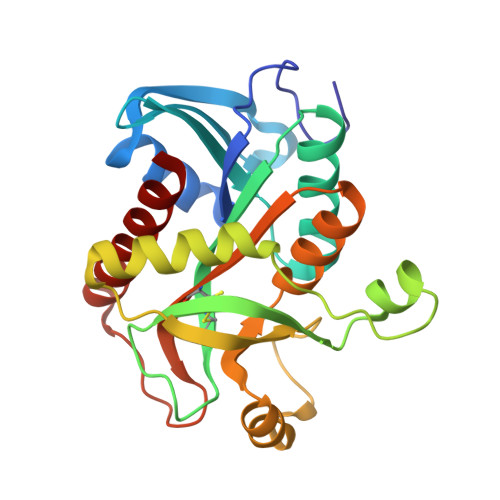Interactions of 2,6-substituted purines with purine nucleoside phosphorylase from Helicobacter pylori in solution and in the crystal, and the effects of these compounds on cell cultures of this bacterium.
Narczyk, M., Wojtys, M.I., Lescic Asler, I., Zinic, B., Luic, M., Jagusztyn-Krynicka, E.K., Stefanic, Z., Bzowska, A.(2022) J Enzyme Inhib Med Chem 37: 1083-1097
- PubMed: 35437103
- DOI: https://doi.org/10.1080/14756366.2022.2061965
- Primary Citation of Related Structures:
7OOY, 7OOZ, 7OP9, 7OPA - PubMed Abstract:
Helicobacter pylori represents a global health threat with around 50% of the world population infected. Due to the increasing number of antibiotic-resistant strains, new strategies for eradication of H. pylori are needed. In this study, we suggest purine nucleoside phosphorylase (PNP) as a possible new drug target, by characterising its interactions with 2- and/or 6-substituted purines as well as the effect of these compounds on bacterial growth. Inhibition constants are in the micromolar range, the lowest being that of 6-benzylthio-2-chloropurine. This compound also inhibits H. pylori 26695 growth at the lowest concentration. X-ray structures of the complexes of PNP with the investigated compounds allowed the identification of interactions of inhibitors in the enzyme's base-binding site and the suggestion of structures that could bind to the enzyme more tightly. Our findings prove the potential of PNP inhibitors in the design of drugs against H. pylori .
Organizational Affiliation:
Division of Biophysics, Institute of Experimental Physics, Faculty of Physics, University of Warsaw, Warsaw, Poland.



















